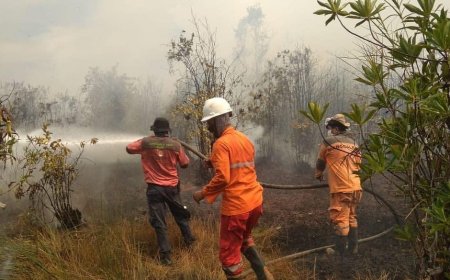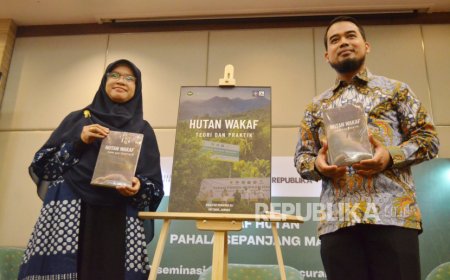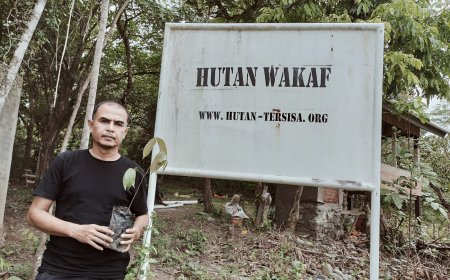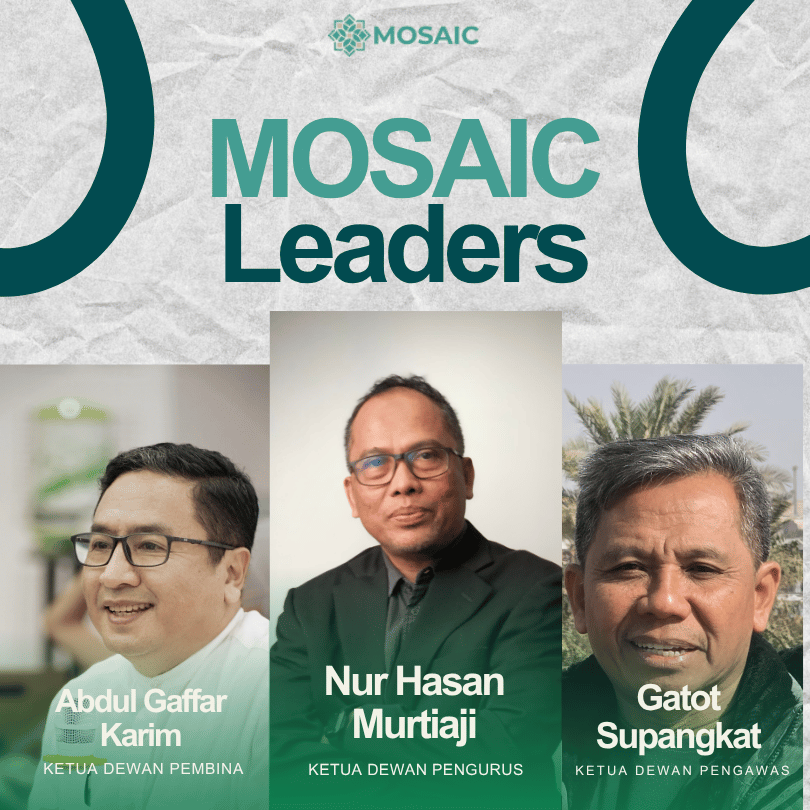Bogor Waqf Forest held carbon credit counting training
Trainees also learned hands-on practice of how to measure carbon uptake using simple vegetation analysis method
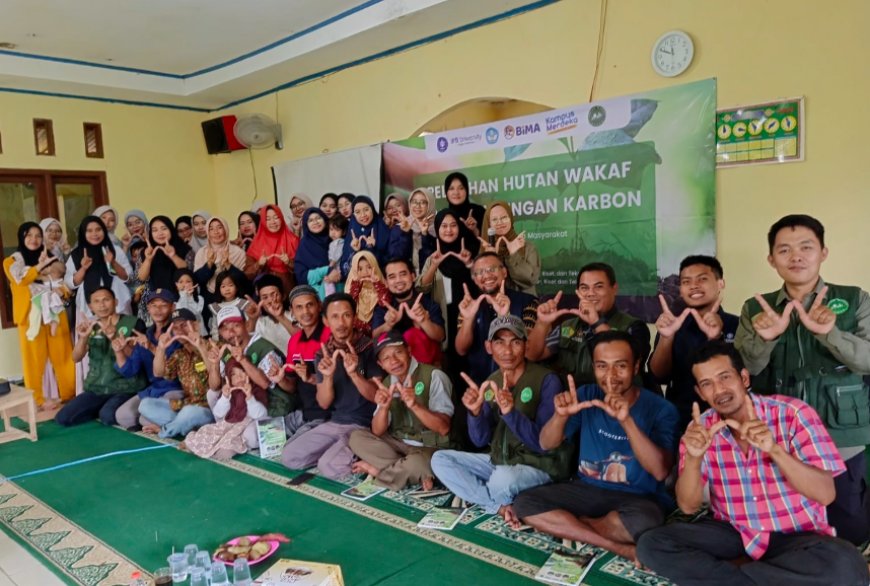
MOSAIC-INDONESIA.COM, BOGOR -- A team of lecturers from IPB University and the Bogor Waqaf Forest Foundation collaborated with Karang Taruna of Cibunian Village organized a community service activity called Waqaf Forest Training and Carbon Calculation which located in Purwabakti Waqf Forest 1, Cibunian Village, Pamijahan District, Bogor Regency
The training was held in two sessions with different themes, namely socialization of basic concepts of zakat waqaf and waqf forest management on September 7, 2024 and training on carbon calculation and use of waqf forest applications on September 28, 2024.
This community service activity was successfully funded through the BIMA Empowerment of Community Partnerships scheme by the Director of Research, Technology, and Community Service, Ministry of Education, Culture, Research, and Technology in 2024.
The chairman of the commitee, Khalifah Muhamad Ali, said that this activity can increase people's capacity in maintaining the environment and make optimal use of the potential of the village through the waqf forest. He also said that this activity aims to improve people's understanding of the concepts of zakat and waqf, waqf forests, carbon calculation mechanisms, as well as the economic potential that can be generated. “Waqf forests have the potential to contribute to carbon trading that has the potential to have an economic impact on the communities around Cibunian Village,” he said in a written statement.
This series of training activities includes the implementation of pre-test and post-test, the exposure of materials delivered by the team of lecturers, trials of measuring the carbon content of trees in the waqaf forest. In this training, we also conducted a live trial of the Waqf Forest application based on the website created by the Bogor Waqf Forest Foundation to make it easier for cadet coral members who will act as surveyors in recording data on the Waqf forest assets.
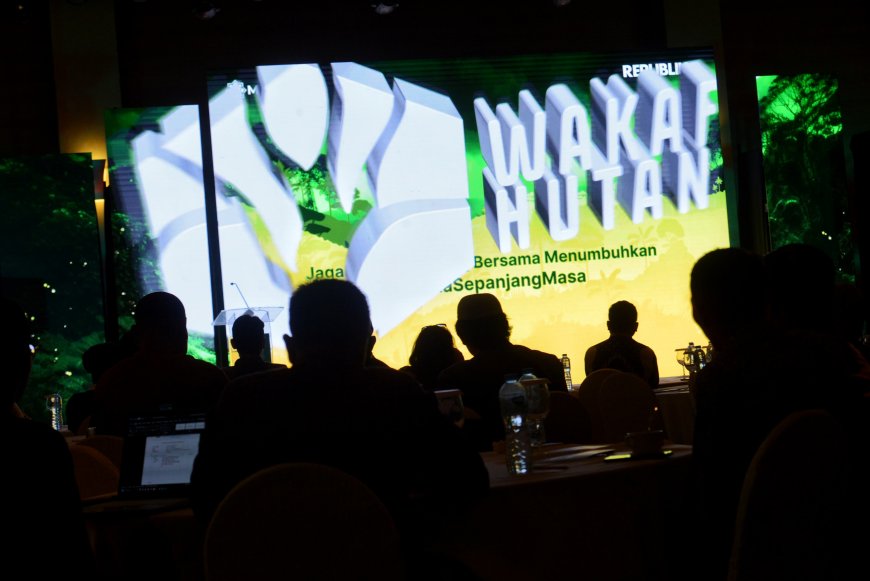
In the first session, this activity contained the presentation of materials related to the basic concepts of zakat waqaf and the management of the waqf forest delivered by Khalifah Muhamad Ali. The presentation continued in the second session related to carbon calculations presented by Muhammad Alam Firmansyah and the use of waqf forest applications by Nur Hasanah.
In the second session, trainees also learned hands-on practice how to measure carbon uptake using simple vegetation analysis methods, such as measuring tree diameter and height. This vegetation analysis was carried out with the help of Trees and Ms. Excel applications for carbon uptake calculations so as to obtain more accurate calculation results. Then, the trainees enter the obtained data into the Waqf Forest application.
In addition to understanding how to calculate carbon, participants were also provided with information about the economic potential of carbon sales. Global demand for carbon credits is rising along with sustainability initiatives from companies and countries around the world. Therefore, carbon sequestration from waqaf forests in Cibunian Village and surrounding areas could potentially be sold as carbon credits, thus opening additional income opportunities for local communities. This is an innovative step that combines environmental preservation with the economic development of the communities surrounding the forest.
In addition to improving people's environmental literacy, the training also introduces them to new sustainable economic resources. Thus, the waqf forest not only serves as a guardian of the ecosystem, but also as a tool of economic empowerment for local communities through the international carbon market.
Waqf forest opportunities
Executive Vice President Business Development of Indonesia Stock Exchange (BEI) Ignatius Denny Wicaksono said that carbon exchanges are a mitigation effort that companies are making to reduce emissions in the world. According to him, the forest waqf program also has the goal of reducing emissions according to Net Zero 2060. “The forest waqf wants to keep the pace of carbon credits with emissions credits with the forest. So I see this as an interesting thing, if it can be passed on to carbon credits,” he said some time ago.
He continued, if the forest could produce carbon credits, then the benefits or value of the waqf could be given back to the beneficiaries. Moreover, the pricing or pricing of forest carbon credits is attractive to buyers.” Pricing of carbon credits is attractive. Buyers see higher quality arbsorb (absorb) emissions. Then there are additional benefits, supporting the surrounding environment, the social aspect of social assistance waqf, so forest waqf is very potential,” Denny explained.
Denny explained that large companies are often looking for premium carbon credits. One of its qualifications is carbon credits that absorb emissions more than reduce them. “Suppose the one that has come out of PLN. They have a Gas Power Plant. It's a gas guzzler, but how do you get carbon credits? Because compared to coal, it is certainly lower,” he said.
According to him, forests are becoming the carbon credits that large companies are looking for given their not small sequestration of emissions. The companies also see additional benefits of the forest such as biodiversity. Thus, the existence of such forests can further help the life of animals. Another benefit is the social benefits of forest management. “This waqf in Sudan definitely has social benefits,” he explained.
To gain that purpose, Denny said, the waqaf forest could actually fit into the premium category of carbon credits. “These forests can be issued carbon credits in the premium carbon credit category. Therefore, I am very curious to wait for this forest waqf to publish its carbon trading so that we can later go to the international market,”he said.
Denny explained that justifying that carbon units are appropriate and properly measured is within the scope of the Ministry of Environment and Forestry. There are four validation or verification agencies (LVV) namely Succofindo, Mutu Agung Lestari, TUV Nord Indonesia and TUV Rheinland Indonesia that have been designated by the MFA. After obtaining verification, the manager can register with the BEI with the documents of the institution and the TIN. “The carbon credits are sold there,” he said.

